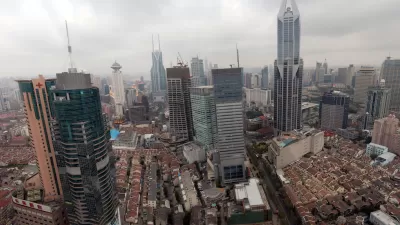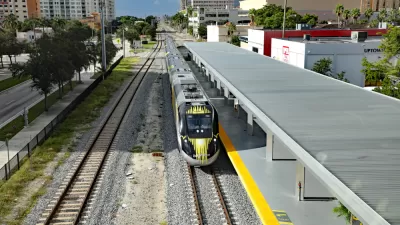China's capital city is already one of the largest in the world, but it's about to get a whole lot bigger. As the Chinese population continues to migrate from rural to urban areas, the Chinese government is planning for megacity of 130 million.

Sprawling rings of development long ago enveloped the Forbidden City, which is but a tiny nucleus in the center of greater Beijing. With the adoption of a new growth plan, the current iteration of Beijing may one day seem as tiny as the Forbidden City does today. The plan is intended to link Beijing with neighboring cities, such as Tianjin, and with its rural surroundings to not only house China's increasingly urban population but also create an integrated economic powerhouse.
Part of the plan includes the relocation of many government services into outlying areas in order to stimulate economic growth and spread the population away from the city's crowded core. Neighboring Heibei Province has few residential restrictions, meaning that it is primed for housing development. Integrating it with the capital will rely in part on new transit options.
"The new supercity is intended to be different in scope and conception. It would be spread over 82,000 square miles, about the size of Kansas, and hold a population larger than a third of the United States. And unlike metro areas that have grown up organically, Jing-Jin-Ji would be a very deliberate creation. Its centerpiece: a huge expansion of high-speed rail to bring the major cities within an hour’s commute of each other."
But, as quickly as many Chinese cities have grown, functioning urban areas are not as easy to build as skyscrapers are. China's public finance structure means, for instance, that the region may have trouble developing schools and other public services, and new cities may be forced to compete for development. Under the current tax system, poor developing cities cannot share revenue with wealthy Beijing.
"Wang Jun, a historian of Beijing’s development, said creating the new supercity would require a complete overhaul of how governments operated, including instituting property taxes and allowing local governments to keep them. Only then can these towns become more than feeders to the capital."
"Infrastructure has also lagged. Until recently, high-speed rail failed to connect many vital cities around Beijing, while many roads did not link up. Planning reports say the area has 18 “beheaded” highways — major arteries built in one of the three districts but not linked to others. One highway ends at a bridge over the mostly dried-out river dividing Yanjiao from Beijing, and has remained unfinished for years."
Then again, China has proven adept at building high-speed rail. A line from Tianjin to Beijing has cut travel time from three hours to 37 minutes.
FULL STORY: As Beijing Becomes a Supercity, the Rapid Growth Brings Pains

Alabama: Trump Terminates Settlements for Black Communities Harmed By Raw Sewage
Trump deemed the landmark civil rights agreement “illegal DEI and environmental justice policy.”

Study: Maui’s Plan to Convert Vacation Rentals to Long-Term Housing Could Cause Nearly $1 Billion Economic Loss
The plan would reduce visitor accommodation by 25% resulting in 1,900 jobs lost.

Why Should We Subsidize Public Transportation?
Many public transit agencies face financial stress due to rising costs, declining fare revenue, and declining subsidies. Transit advocates must provide a strong business case for increasing public transit funding.

Paris Bike Boom Leads to Steep Drop in Air Pollution
The French city’s air quality has improved dramatically in the past 20 years, coinciding with a growth in cycling.

Why Housing Costs More to Build in California Than in Texas
Hard costs like labor and materials combined with ‘soft’ costs such as permitting make building in the San Francisco Bay Area almost three times as costly as in Texas cities.

San Diego County Sees a Rise in Urban Coyotes
San Diego County experiences a rise in urban coyotes, as sightings become prevalent throughout its urban neighbourhoods and surrounding areas.
Urban Design for Planners 1: Software Tools
This six-course series explores essential urban design concepts using open source software and equips planners with the tools they need to participate fully in the urban design process.
Planning for Universal Design
Learn the tools for implementing Universal Design in planning regulations.
Smith Gee Studio
Alamo Area Metropolitan Planning Organization
City of Santa Clarita
Institute for Housing and Urban Development Studies (IHS)
City of Grandview
Harvard GSD Executive Education
Toledo-Lucas County Plan Commissions
Salt Lake City
NYU Wagner Graduate School of Public Service




























